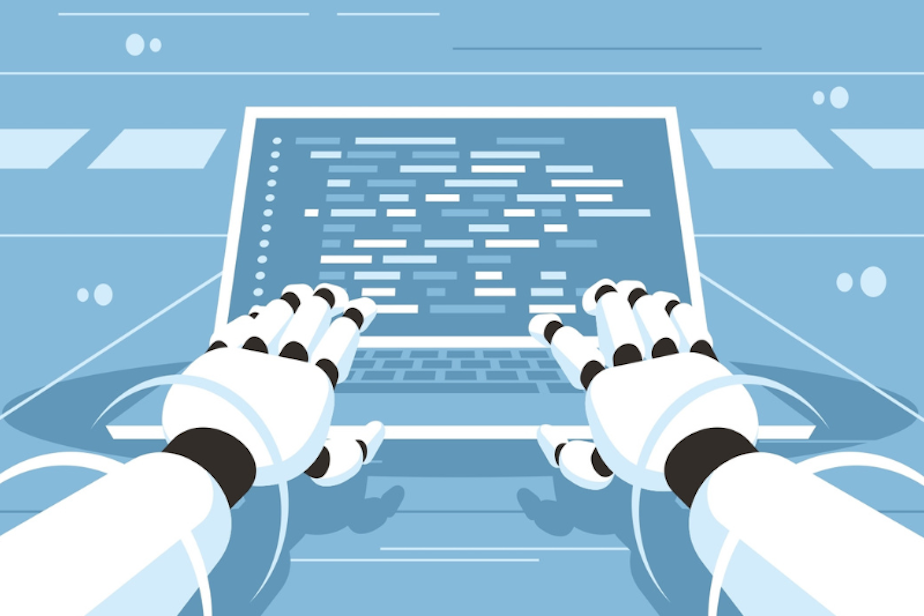Artists vs. AI: where innovation meets unwelcome imitation

Microsoft and Google both rolled out artificial intelligence chatbots this month in their quest to stay on the cutting edge of online search. Bard and Bing seem to have flubbed their debuts, spitting out factual errors, and, in the case of Bing’s alter-ego, Sydney, mildly creepy fantasies and declarations of love for a journalist.
Meanwhile, some corners of the art world are pushing back on how AI-powered tools are being used to absorb human creators’ work to manufacture new images. In some cases, artists are taking the creators of these programs to court.
That has KUOW Arts and Culture reporter Mike Davis wondering: Do text-to-image generators like Midjourney, Stable Diffusion, and DALL-E, along with chatbots like ChatGPT, represent a devastating disruption to the art world?
Or, do they simply offer a new avenue for innovation and creative expression in visual art, poetry, and literature?
KUOW's Mike Davis originally interviewed local entrepreneur Karl Steadman, after discovering that the author had created and published a novel in less than eight hours.
“I estimate it took me from the beginning, literally starting the searches and conversations with chat GPT, to having an actually illustrated and published on Amazon, about seven and a half hours.” - Karl Steadman
ChatGPT is what’s called a "large language model." It strings together answers to prompts based on patterns it has observed in the gigantic amount of text it's processed from all over the internet, along with some training and limited guardrails from its creators at Open A.I.
It’s basically "auto-complete" on steroids. It doesn’t know what’s true, and it has a big problem already giving fake advice, which can be dangerous, or passing totally bonkers things off as fact. (When you ask it to give you factual answers – a novel is a different story.) The software throws words together in a logical flow without understanding or caring about the underlying meaning.
Mike explained that Steadman had used ChatGPT by feeding it prompts to write chapters. He decided what each chapter would be about in his book, then he fed those ideas to ChatGPT as individual scenarios. The AI would then kick out how each scenario would go down in chapter form.
Sponsored
However, even Steadman admits that the prose scraped together by the AI still feels a bit juvenile. He also thinks that actual authors, who have original ideas and skill in creating interesting narratives, would be able to use these tools to create even better work.
"I actually think people that are really good at writing have an advantage because they have the ability to tell a story very well," Steadman said. "If they're a good storyteller, that will come across in the end."
There are a plethora of legal implications in this area too. For example, can ChatGPT be considered an "author" under the law?
To answer that question, Mike hit up professor Margaret Chon, who teaches Copyright Law at Seattle University.
"The copyright office, so far, has rejected the idea that any non-human can be an author." - Margaret Chon
Sponsored
There is a big problem with AI generated art, in that it often uses the work of existing authors or artists — work that is protected by copyright. These creatives have expressed concern over third-party creators using AI to generate text or visual images, which use their work without attribution or permission.
Getty Images is currently involved in a lawsuit against an AI image creation software company, alleging their algorithm has stolen over 12 million of Getty Image's photos.
Unconscious bias and culture also seep into AI generation, since the algorithms they use are created by humans. The information they scrape from the internet has inherent bias, and since an AI isn't critically thinking about what it may be gathering, those biases are reflected in the work created.
"What we're seeing with all of this AI software is a reflection of our own culture, whether it be the good parts or the bad parts," Davis explained. "And a lot of times, it's the bad."
He talked with Tivon Rice, an assistant professor in the Department of Digital Arts and Experimental Media Program at the University of Washington.
Sponsored
"It's my hope that the arts are in a very particular position where they can provide critical resistance to that sort of flattening of culture, and sort of homogenization of language, image, and music." - Tivon Rice
Artists can also use this technology to help spark their own creativity.
One of those people is poet Arlene Kim. She's been using a text generation AI that her husband created. She trained it by feeding it all of her poetry, and prompts it to make new works in her voice.
She got her start by writing poems in Microsoft Excel.
"I asked my husband to create this thing, where if I put in all my poems or everything I've ever written, can it generate for me an echo version of myself," Kim explained. "Like a man-made, machine version of what I've been writing in its own way, where it's not making up words — it's only ever using my words, but it comes out differently."
Sponsored
Davis said he's looking forward to the AI art trend slowing down a little.
"I just hope that from here, we go to a place where the human artist is enhanced, but not erased." - Mike Davis
To listen to the entire conversation between Soundside's Libby Denkmann and KUOW's Mike Davis, click the link above. And let us know what you think about AI generated art. Send us an email to soundside.kuow.org.






